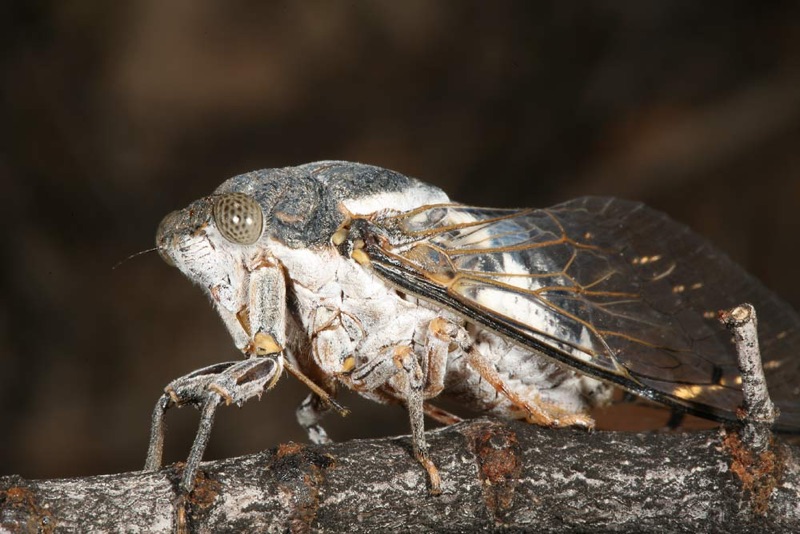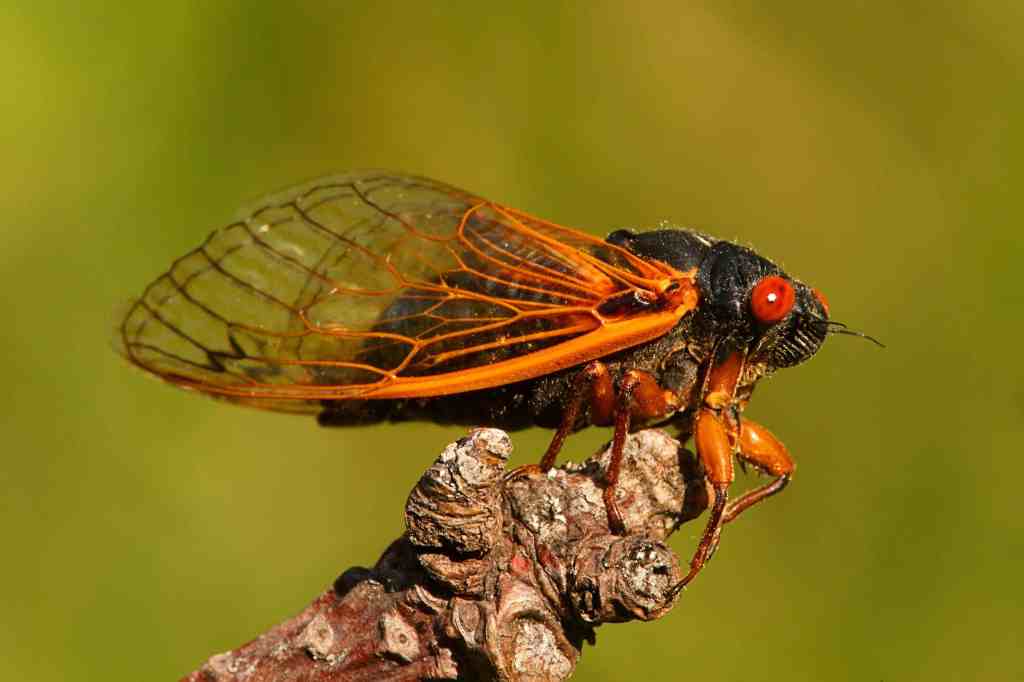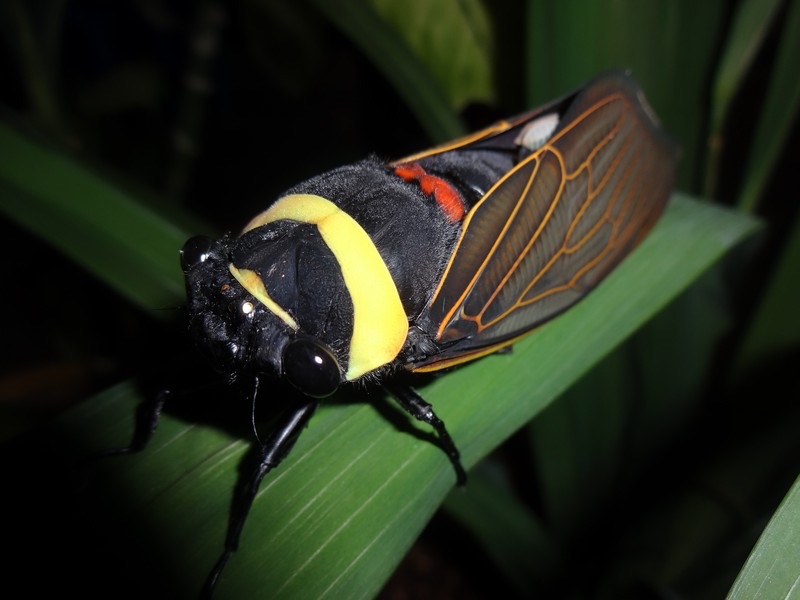Cicadas

Cicadas are true bugs (or rather, members of the order Hempitera), and at least 3 000 species are distributed worldwide, primarily in the tropics. They are known for their songs and the extended amount of time the nymphs spend underground, ranging from 2-17 years.
Why do I Like Cicadas?
I like cicadas for their iridescent beauty (unbeknownst to many), sleek biological design, omnipresence, and of course, since I am a musician, their musical prowess!
Cicadoidea Taxonomic Information
| Scientific classification | |
|---|---|
| Kingdom: | Animalia |
| Phylum: | Arthropoda |
| Class: | Insecta |
| Order: | Hemiptera |
| Infraorder: | Cicadomorpha |
| Superfamily: | Cicadoidea |
| Families |
| Adelia Aleeta Auscala Beameria Birrima Borencona Cacama Caliginopsalta Chelapsalta Chrysocicada Cicada Cicadetta Cicadinae: Translucent cicadas Clidophleps: American stridulating cicadas Clinata Clinopsalta Cornuplura Crotopsalta Diceroprocta Diemeniana Dipsopsalta Drymopsalta Erempsalta Ewartia Fidicina Froggattoides Gagatopsalta Galanga Gelidea Graminitigrina Gudanga Heliopsalta Herrera Kikihia Kobonga Limnopsalta Magicicada: Periodical cicadas Marteena Melampsalta: Little grassland cicadas Mugadina Myopsalta Nanopsalta Neocicada Neoplatypedia: Wing-banging cicadas Neopunia Noongara Odopoea Okanagana Okanagodes Pacarina Palapsalta Paradina Parnkalla Parnquila Pauropsalta Physeema Pictila Pipilopsalta Platypedia: Wing-tapping cicadas Platypediinae: Crepitating cicadas Platypsalta Plerapsalta Proarna Psephenotettix Punia Pyropsalta Quesada Samaecicada Simona Sylphoides Tamasa Taurella Telmapsalta Terepsalta Tettigades Tettigadinae: Stridulating cicadas Tettigarcta Tettigarctinae: Australian hairy cicadas Tibicen Tibiceninae: Concealed-timbal cicadas Tibicina Tibicininae: Exposed-timbal cicadas Tibicinoides Toxala Tryella Urabunana Uradolichos Yoyetta Zammara |
Favourite Species
CICADAS (ORDER HEMIPTERA)

Bladder
Cystosoma saundersii
Subfamily: Cicadidae
Sex of Subject: ♂♀
Species Profile
This calming species is native to forests in New South Wales and Southeastern Queensland of Australia. They are nocturnal, and they camouflage themselves as leaves similar to that of leaf insects and certain species of ghost mantids. They are active throughout September to December, with their populations peaking in November

Common Cactus Dodger
Cacama valvata
Subfamily: Cicadinae
Sex of Subject: ♂♀
Species Profile
This rather shy and tame species get their name from their elusive ability of being able rest on bush cacti without impailing themselves, a feat which only they and ants have mastered. They can be found throughout May until June in Northwestern and South North America, as far as British Columbia and Alberta in Canada down to Texas in the US.

Northern Dusk
Megatibicen auletes
Subfamily: Cicadinae
Sex of Subject: ♂♀
Species Profile
Being 1 out of 10 species within the genus Megatibicen, they are the largest North American cicada measuring up to 4 cm. Despite their name, they are most common in southern regions of the continent. They can be found is oak woodlands throughout late summer.

17-Year Periodical
Magicicada cassinii
Subfamily: Cicadettinae
Sex of Subject: ♂♀
Species Profile
Easily the most popular species of cicada, this species is pandemic to North America, and the nymphs of this species spend 17 years underground before rising to molt for the final time into adults.
The males of this species synchronize their courtship rituals so they fly and sing in unison.

Bush
Megatibicen dorsatus
Subfamily: Cicadinae
Sex of Subject: ♂♀
Species Profile
This interesting species is native to the tall grass prairies of central United States. They can be found throughout July-September, with populations peaking in August.

Suberb Dog-Day
Neotibicen superbus
Subfamily: Cicadinae
Sex of Specimen: ♂♀
Species Profile
As their name states, these cicadas are most prevalent during the dog-days of summer, May-August. They range between 2.9 – 5 cm long, and can be found in woodlands on oak and juniper throughout southern United States.

Rainforest
Tacua speciosa
Subfamily: Cicadinae
Sex of Specimen: ♂♀
Species Profile
Dubbed as „the world’s most beautiful cicada,” this species, who calls Southeast Asian rainforests in Malaysia, Borneo, and Singapore their home, is very large reaching up to 5.7 cm in length. They are one of the largest cicadia species in the world.





